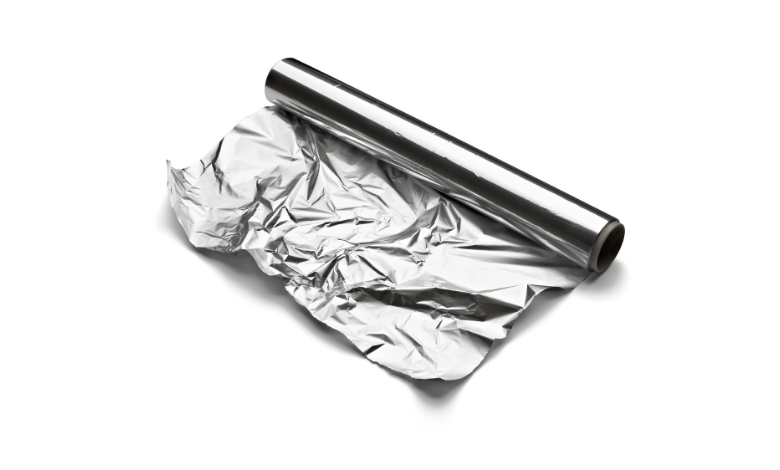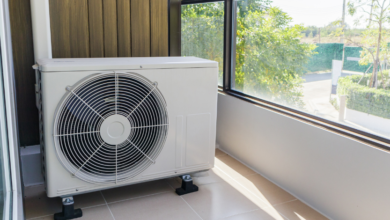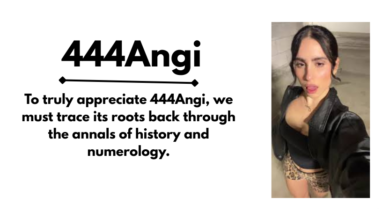Aluminum corporation mj e.i.r.l.

If you are researching aluminum suppliers in Peru, you may have come across Aluminum Corporation MJ E.I.R.L. This guide pulls together what is publicly known about the company, explains the kinds of products it imports, places it in the Peruvian market, and gives a practical roadmap for businesses that want to source aluminum profiles and hardware from them. I wrote this so a beginner can follow every step, but it also includes trade data and practical checks that experienced buyers use.
The article covers company identity, product categories, customs data and origins, practical steps for due diligence, a sample buyer workflow, and tips to reduce risk when importing aluminum into Peru. Where possible I reference customs and trade databases so you can verify the facts independently.
1. Company profile and identity
Legal name and registration
Aluminum Corporation MJ E.I.R.L. is registered in Peru as an “Empresa Individual de Responsabilidad Limitada” with RUC number 20610157824. Public business directories list the company as active and located in the Villa El Salvador district of Lima.
Business type and primary activity
Public records and trade-data aggregators show the business operating in retail hardware and as an importer of aluminum products, particularly aluminum profiles. The company appears in multiple customs-record databases as the importer of record for shipments of aluminum profiles and related items.
Where the goods come from
Customs data consistently shows China as a major source country for Aluminum Corporation MJ E.I.R.L.’s imports. That is common in the industry because China is a major global producer of aluminum extrusions and hardware. Trade-reporting sites list many entries showing shipments labelled as “perfiles de aluminio” arriving from China.
Why this matters
Knowing the legal identity, registration number, and trade patterns helps you confirm who you are dealing with, check tax and regulatory standing, and verify shipment records. If you plan to buy from them, have their RUC and registered address on hand. You will use those to check official Peruvian registries and customs records.
2. What the company imports and sells
Based on customs records and product descriptions across trade sites, Aluminum Corporation MJ E.I.R.L. primarily imports the following categories:
-
Aluminum profiles and extrusions: these are the long, shaped aluminum pieces used to make frames for doors and windows, display cases, partitions, and various architectural and manufacturing applications. HS codes in their records include profile-related codes like 7604102000 and 7616.
-
Hardware and fittings: handles, hinges, and fittings that pair with aluminum frames. These often appear in the same shipments or in related product lines.
-
Aluminum bars, rods, and general stock: smaller quantities of raw shapes suitable for fabrication and manufacturing. Trade records list mixed shipments that include varying kilogram totals, which indicates both small and larger orders.
Product details you should checklist before ordering
When evaluating aluminum products, check these points and make sure the seller provides them:
-
Alloy type (for example 6063, 6061), temper, and mill certificates. These tell you strength and suitability for specific use.
-
Surface finish: anodized, powder coated, mill finish, or wood-look finishes. Trade records list “tacto madera” (wood touch) finishes in some shipments, so check samples.
-
Exact profile drawings or dimensions, including tolerances and lengths.
-
Quantity per shipment and packaging details to ensure damage-free transport.
-
Lead time, minimum order quantities, and sample availability.
Shipping manifests and import lines show shipments ranging from small sample quantities in the teens of kilos to thousands of kilos for commercial orders. This suggests the company handles both small and larger buyer needs.
Read Also: R kappachino: Inside Reddit’s Most Talked-About Fighting Game Community
3. Trade and customs data — what the records show
Several trade-data aggregators and customs-report services collect records showing Aluminum Corporation MJ E.I.R.L.’s import history. These databases are useful for understanding sourcing, shipment frequency, and product mix.
Key patterns from customs data
-
Shipment volume and frequency: Sources show multiple shipments across recent years with hundreds of entries in some datasets. Platforms report hundreds of import records for profiles, indicating consistent import activity.
-
Primary source country: China is consistently the top origin country for listed shipments. This is visible across multiple databases. Knowing this helps when you evaluate supplier reliability and lead times.
-
HS codes and product classification: Entries frequently use HS codes associated with aluminum profiles and extrusions, such as 7604 series codes and 7616. That lines up with the product descriptions seen in shipment details.
Where to verify these records yourself
If you want to confirm the data, here are practical sources:
-
Government customs reports and local Peruvian import records where available.
-
Commercial trade data firms such as Volza, ImportGenius, or Export Genius. These sites aggregate customs manifests and provide searchable company-level histories. They often require subscriptions for full details.
Using these databases is the closest you can get to a history of what the company actually imported, rather than relying on marketing or hearsay.
4. Market context — the aluminum industry in Peru
Understanding the local market helps you decide how to work with a supplier like Aluminum Corporation MJ E.I.R.L.
Demand drivers in Peru
-
Construction and renovation: aluminum profiles are widely used for windows, doors, storefronts, and interior systems. Growth in building and renovation increases demand.
-
Retail displays and fixtures: stores and exhibition work use custom aluminum extrusions and displays. Trade entries for “fabricacion de puertas, vitrinas, manparas, exhibidores” line up with this.
-
Manufacturing and industrial use: smaller manufacturers use aluminum stock and profiles for products and machines.
Supply-side realities
-
Import dependence: many Peruvian importers source profiles from China and other Asian producers where extrusions are lower cost and produced at scale. Trade records for Aluminum Corporation MJ show China as a repeated supplier.
-
Local fabricators: local firms take imported extrusions and add value with fabrication, powder coating, and assembly. That means buyers often buy profiles and then work with local fabricators.
-
Metal price sensitivity: aluminum price fluctuates with global markets. For buyers, price movements affect project bids and margins.
Opportunities and challenges
-
Opportunities: fast project turnaround if the importer keeps stock, competitive pricing from bulk imports, and the ability to source specialty finishes like wood-touch or black anodized profiles. Trade records show such finishes in shipments.
-
Challenges: lead times on ocean freight, customs delays, and quality inconsistency across batches when sourcing from multiple suppliers. Quality control is essential.
5. How to verify and do due diligence
Before placing a sizable order, run a set of checks. Many problems in international buying come from skipped verification steps.
Practical verification checklist
-
Confirm legal identity
-
Use the RUC number 20610157824 to verify the company on Peru’s official business registries. This helps you confirm the address and active status.
-
-
Check customs records
-
Use trade-data services to view recent shipment lines. Check product descriptions, port of arrival, and supplier origins. This helps verify that the company has imported the product you want.
-
-
Ask for product paperwork
-
Request mill test certificates or material certificates, photos of extrusions, and sample pieces. For coated finishes, ask for finish samples.
-
-
Request references
-
Ask for local clients or photos of completed installations. If a supplier resists, treat the warning as significant.
-
-
Payment and terms
-
Avoid full prepayment unless you have robust trust or escrow. Consider payment by letter of credit, partial prepayment, or using verified trade platforms that offer buyer protection.
-
-
Inspect shipments
-
If possible, arrange inspection at origin or in Peru before final release. Inspections can check dimensions, finish, and packaging.
-
Red flags to watch for
-
No verifiable tax registration.
-
Inconsistent or vague product descriptions.
-
Reluctance to provide certificates or samples.
-
Odd payment requests or rapidly changing bank details.
6. How to place an order and manage logistics
If you decide to buy from the company, here is a step-by-step buyer path that reduces surprises.
Step-by-step buyer workflow
-
Request a formal quote
-
Ask for price per kilogram or per profile length, lead time, minimum order, packaging details, and incoterms (FOB, CIF, DDP).
-
-
Order samples
-
Get physical samples first. That confirms alloy, finish, and machining compatibility. Many shipments seen in the records include small-sample weights, which suggests sample shipments are used.
-
-
Agree contract terms
-
Include payment schedule, inspection rights, acceptance criteria, and penalties for nonconforming goods.
-
-
Arrange inspection and shipping
-
Decide who is responsible for freight and customs clearance. If the supplier is experienced with Peruvian customs, they may offer CIF to the Peruvian port. Ensure you understand insurance responsibility.
-
-
Customs clearance and local transport
-
Use a local customs broker who knows Peruvian import rules for aluminum. They will calculate duties and taxes and register the import properly.
-
-
Final acceptance
-
Inspect the goods upon arrival for damage, finish, dimensions, and quantity. Compare to the sample and certificates.
-
Common shipment issues and how to avoid them
-
Damage in transit: ensure proper packing and palletization and consider insurance for ocean shipments.
-
Incorrect profile dimensions: always confirm profile drawings and tolerances.
-
Color mismatch: for powder coated or anodized finishes, color variation is common. Approve a color standard sample using RAL or other recognized color system.
7. A sample buyer journey (practical example)
To make this concrete, here is a hypothetical example that reflects the kinds of shipments visible in customs records.
Scenario: A small signage business in Lima needs 1,000 kg of wood-look aluminum profiles for storefront frames.
Steps they took:
-
Search and shortlist — They find Aluminum Corporation MJ E.I.R.L. in trade data with multiple recent entries for wood-look profiles.
-
Request samples — They pay for two sample profiles to be shipped by air freight. Samples arrive and the finish matches the specification.
-
Negotiate terms — They negotiate CIF callao, 30 percent deposit, 70 percent on arrival after inspection. Payment via bank transfer with the supplier’s official company bank account.
-
Third-party inspection — They hire an inspection company to check a random sample from the container at the port. The inspector verifies alloy and dimensions.
-
Customs clearance and delivery — The broker clears customs, pays duties, and arranges transport to the client’s shop. The client inspects the goods on receipt and confirms acceptance.
Why this worked
This process avoids surprises by confirming quality before bulk shipment and by using inspection and a trusted broker. This mirrors the kind of workflow many Peruvian buyers use with importers who source from China. Trade records show both small sample shipments and larger container loads for the company in question, meaning this is a realistic pattern.
8. Best practices and practical tips
These are simple, practical rules that many buyers use to reduce risk.
-
Ask for full technical specs rather than vague descriptions. A “profile” is meaningless without drawing and tolerances.
-
Use third-party inspection for first orders and for large shipments. Inspectors check weight, finish, and dimensions against the contract.
-
Set clear acceptance criteria in writing. Define what “acceptable” means for color, anodizing thickness, and dimensional tolerance.
-
Hold back final payment pending inspection if possible. Or use escrow or partial payment terms.
-
Keep sample sets and match future orders to the same sample. This reduces color and finish mismatch over time.
-
Work with a customs-savvy broker in Peru. They help calculate duties and avoid delays.
-
Plan for lead time. Ocean freight from China can take several weeks plus customs processing time.
These practices come from common trade standards and match what importers do to protect themselves. They are particularly relevant when working with importers that source from overseas suppliers.
9. Sustainability and quality considerations
Aluminum is recyclable and has a smaller lifecycle carbon footprint than many alternatives when recycled content is used. If sustainability matters for your project, consider asking the supplier for:
-
Recycled content certificates or evidence of responsible sourcing.
-
Energy and emissions data from their mills if available.
-
Surface finish environmental compliance such as low-VOC powder coatings.
If sustainability is a selling point for your customers, adding recycled content or eco-friendly finishes can be a differentiator.
10. Future outlook and market signals
Based on trade records and the general market, expect the following:
-
Continued import activity for profiles and hardware from major producers like China, barring major shifts in trade policy. Trade records show consistent imports for this company over time.
-
Price sensitivity tied to global aluminum markets. When global prices rise, importers either pass costs to buyers or narrow margins.
-
Growing interest in finishes and custom extrusions. As retail and architectural applications grow, demand for specialty profiles and finishes will likely rise.
11. How to contact and verify the company right now
Use the RUC and address to perform official checks on Peruvian business registries and municipal records. Public registries list the company address in Villa El Salvador and the RUC 20610157824. For trade history, use commercial customs aggregators like Volza or ImportGenius to view manifest-level data. These steps let you confirm both legal standing and import activity.
12. Conclusion
Aluminum Corporation MJ E.I.R.L. is a registered Peruvian company that imports aluminum profiles and related hardware, with a clear pattern of imports from China visible in multiple trade databases. If you plan to source profiles or hardware from them, follow standard verification steps: confirm their RUC and registration, request technical certificates and samples, use third-party inspections, and work with a customs-savvy broker in Peru. These steps reduce risk and help ensure product quality.
Trade records are a powerful tool. They reveal product types, volumes, and origin countries, which is particularly useful when a company does not have an extensive public website or broad online presence.
Frequently Asked Questions (FAQ)
Q: Where is Aluminum Corporation MJ E.I.R.L. registered?
A: It is registered in Peru as an Empresa Individual de Responsabilidad Limitada with RUC 20610157824, listed in Villa El Salvador, Lima.
Q: What products does the company import?
A: Customs records show a focus on aluminum profiles and extrusions, hardware for doors and displays, and related aluminum stock. HS codes in records include profile-related codes like 7604102000 and 7616.
Q: Where do their imports come from?
A: Records consistently list China as the leading country of origin for their shipments.
Q: How can I verify their past shipments?
A: Use trade-data platforms such as Volza, ImportGenius, Export Genius, or government customs data to view shipment manifests and product lines. These may require subscriptions for full access.
Q: What should I ask for before ordering from them?
A: Ask for technical drawings, alloy and mill certificates, finish samples, sample pieces, packing lists, lead times, incoterms, and references. Also verify their RUC and legal registration.



